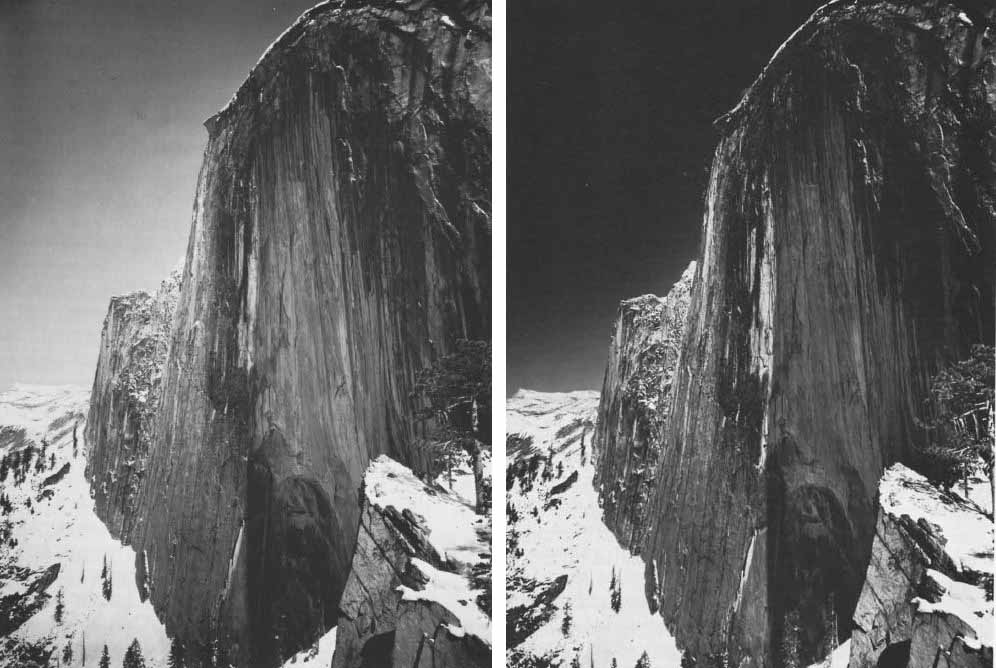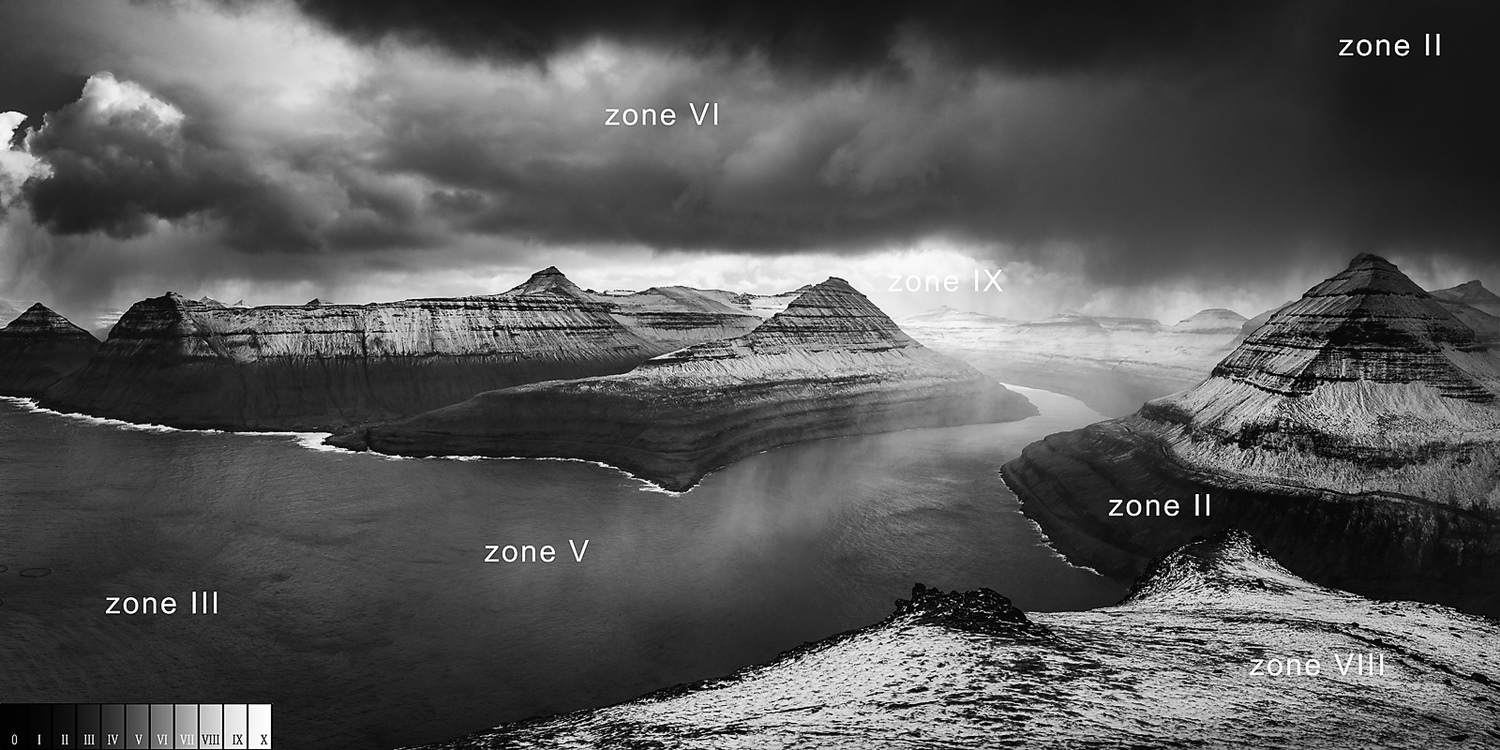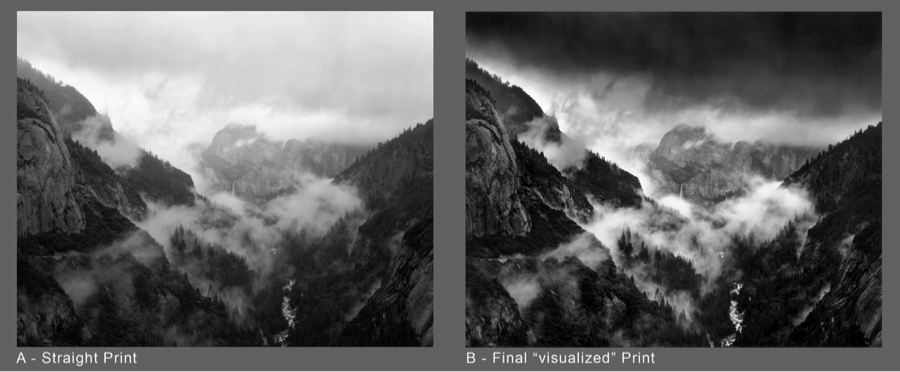Ansel Adams was an American landscape photographer. He was best known for his black and white photos of the American West.
In the beginning of his journey as a photographer, he took photos as a visual diary of his experience. This links to David Campany and how he says that photographs can capture special moments people want to keep forever, or that they could simply be to document something.
On April 10th 1927, Ansel Adams went to the diving board in Yosemite National Park to photograph the Half Dome. He had a vision of what he wanted his photo to look like, he felt inspired. Firstly, he used a yellow filter when taking the photograph. A yellow filter is commonly used in black and white film to absorb all light except yellow. However, the photograph was not what he visualised, there was no excitement in the photo. So, he took out his red filter and exposed the camera for 5 seconds. A red filter which transmits only red light and absorbs all other colours. This matched his vision.

The photograph he took with the yellow filter is on the left. The photograph with the red filter is on the right. The red filtered image is much more well exposed and makes the photograph look a lot more dramatic and allows the focus to just be on the rock.
“You don’t take a photograph, you make it.”
Ansel Adams
This is one of Ansel Adams’ most famous quotes. I think this is important as it tells photographers that you should have to work to create a photograph. When you ‘take’ a photo, you don’t really create it. It communicates the lack of creativity. I think it kind of implies how you are taking something that isn’t your own. When you ‘make’ a photograph, it implies that creative decisions where made in order to produce that photo and that you made it your own.
The Zone System

The Zone System was created by Fred Archer, a portrait photographer, and Ansel Adams. It is a scale consisting of 11 tone values which allows a photographer to achieve optimal film exposure and ensure that the photographs are properly exposed each and every time. The darkest tone value on the scale is Zone 0 (Pure Black) and the lightest is Zone 10 (Pure White). Adams and Archer first introduced their method at the Art Centre School of Design in Pasadena, California. They said that it would help photographers to analyse the brightness levels of the landscape and manage the way those brightness levels would be rendered in the final printing.
Below is a black and white photograph labelled with the zones corresponding to the tone values in the picture.

The Zone System has helped so many photographers develop their work. Ansel’s photographic assistant, Alan Ross, brought the Zone System back into modern day. He said that the Zone System allows you to “achieve more accurate, consistent and planned results”. Ross was a photographer best known for his black and white photos of the American West. Below is one of his photographs which he has used the Zone System to achieve optimal film exposure and create a well-exposed image.

Group f/64

Group f/64 was a group of photographers founded in 1932 who had similar photographic styles. The group consisted of; Ansel Adams, Imogen Cunningham, John Paul Edwards, Preston Holder, Consuelo Kanaga, Alma Lavenson, Sonya Noskowiak, Henry Swift, Willard Van Dyke, Brett Weston, and Edward Weston. Their photographs had a sharp focus and were carefully framed.
I think the name is original and quite creative as f/64 is an f-stop which represents the smallest aperture possible when using large-format view cameras at that time. F/64 allows as much of the picture as possible to be in sharp focus as it has the greatest depth of field. It allows the photograph to be really good quality and be really clear with lots of definition. This is a very important element in the group members’ work.
